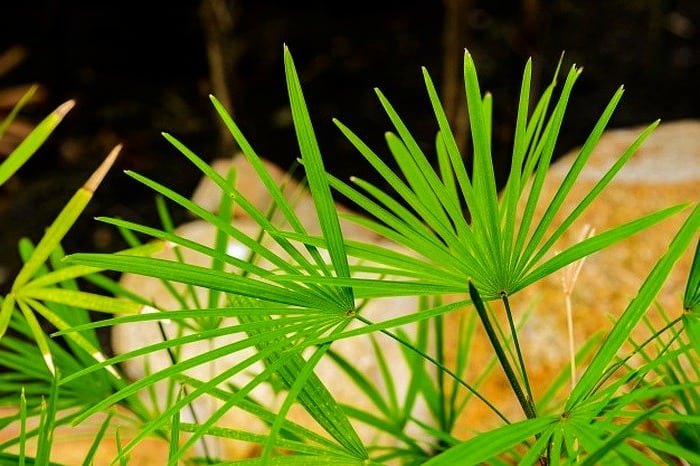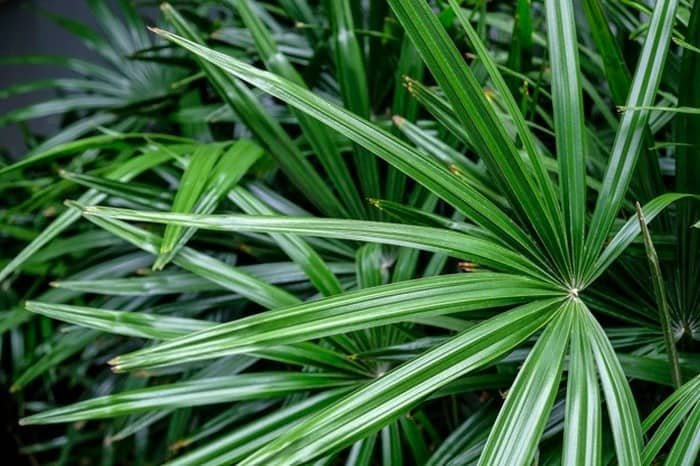Methods for Growing and Caring forRape Palm
The Rape Palm is a beautiful houseplant that can easily be placed in a corner near a sunny window, and caring for it isn’t very complicated. This houseplant has air-purifying properties, absorbing and eliminating ammonia from the air. Under suitable conditions, the Rape Palm can thrive indoors. If you want to buy this lovely small palm, this part ofSelMagzwill help you care for your plant.
Light
The place wheresunlightdirectly shines is not ideal for the Rape Palm. Unfiltered sunlight can cause leaf burns. When grown outdoors, the Rape Palm prefers low light and can even tolerate somewhat shaded areas. It should be placed where it can receive bright, indirect light near a window.

Soil
Loamy soil with good drainage is the best option for the Rape Palm. Potting soil specifically for palms also works well for this plant. African violet potting soil is also suitable.
Water
The Rape Palm needs moderate watering and is somewhat drought-resistant once established. In spring and summer, when the plant is actively growing and the soil surface is dry, water it. In autumn and winter, water it when the top 2 inches of soil are dry.
Temperature and Humidity
Besides light, another factor that makes Rape Palm ideal for indoor growth is a normal room temperature between 60 to 80 degrees Fahrenheit. In cooler months, ensure the palm stays above 55 degrees Fahrenheit, as lower temperatures can harm the plant. Protect the plant from cold drafts and hot air that can dry it out. The palm prefers humidity of 50 percent or higher. Insufficient watering causes leaf tips and edges to dry out while overwatering leads to root rot. You can regularly mist the palm with water or place the pot on a tray filled with pebbles and water, making sure the pot is not sitting directly in the water to avoid root rot.

Fertilizer
The Rape Palm only needs fertilizer during the growing season, so from mid-April to September, feed it monthly with diluted liquid fertilizer for houseplants.
Proper Pot and Repotting the Rape Palm
The Rape Palm does not like small pots, so initially select a pot that is slightly larger than the root size and ensure there are enough drainage holes.
Plan to repot the Rape Palm every other year in the spring into a larger container. To do this, gently remove the plant from its pot, keeping the roots intact as much as possible, then place it in the new pot, fill around it with fresh potting soil, and water it.
Pruning
The Rape Palm does not require much pruning, so avoid trimming branches that have only slightlyturned brown(often caused by lack of water or light) as they can still use their nutrients. However, if an entire branch has changed color or is dead, you can prune it.

Propagation
To divide the plant, first remove it from the pot, and with a sharp tool like pruning shears, divide the root mass and plant each part in separate pots. After dividing, reduce the number of leaves on each plant to minimize water loss andstressas much as possible. Be sure to dust the broad leaves of the plant to keep the Rape Palm looking vibrant and healthy.
Pests or Diseases
These plants generally do not have serious pest or disease problems, but watch out for scale and spider mites that can affect many houseplants. Symptoms of plant disease include wilting or yellowing leaves, a sticky or web-like substance on leaves, and small light or dark spots along the plant. Therefore, treat your plant with a suitable pesticide as soon as possible.
Problems and Solutions
Like any other plant, the Rape Palm can encounter problems such as pests, each having a solution that you will read about next.

Brown Tips of Leaves
Brown tips on Rape Palm leaves are natural in small amounts, but if they occur excessively and increasingly, you should find a way to eliminate them. Trimming the brown tips of the palm is simple, just separate the browned area with your fingers. Additionally, if this problem becomes severe, assess your watering schedule; insufficient watering results in dried tips and edges of leaves, while overwatering leads to root rot.
Mealybugs
Mealybugs are the most common pests found on the Rape Palm. Treating mealybugs on this plant is challenging, as they usually nest under the fibrous stems. The best treatment is a thorough spraying and using a systemic insecticide. Typical hand-cleaning methods are not very effective since cleaning the meal from underneath the fibrous stems is difficult.
Water Damage
This plant is the most commonly overwatered houseplant. All precautions should be taken to ensure the pots are healthy and free of cracks and holes. Nothing is worse than facing a rotting carpet or ruined hardwood floors due to overwatering a houseplant.







